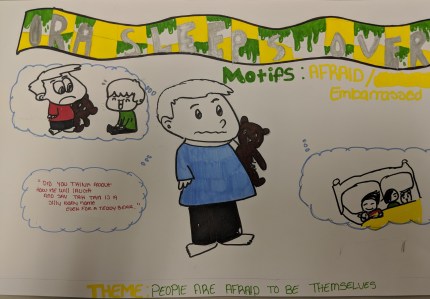From the Classroom: Happy Picture Book Month!
While I use picture books all year long in my high school classroom, it is a happy coincidence that I use them almost daily during the month of November – picture book month. They make a more regular appearance this month because this is when we shift our focus to a short story unit and picture books are ideal for introducing students to literary elements and easing them into literary analysis.
I start the unit with a fun trip down reading memory lane by putting picture books on display all around the room and asking students to share their earliest reading memories. The excitement is palpable as students giddily share memories of gathering on carpets, or signing books out of libraries, or laying side by side with a parent and a good book. This year I used this article to prompt the sharing and had students reply with a classroom “tweet” on our discussion board.



After our discussion, students were excited (literally racing) to select books to read in pairs. I used this reading and a short pre-unit assessment based on the picture book to determine what content knowledge students already had. Since students have an opportunity to read to kindergarten reading buddies later in the school year, they finish this activity by writing and posting short reviews of their books. This way students have an array of recommended picture book reads to choose from when they start reading with their kindergarteners.

This week we practiced generating and analyzing theme statements by reading The Giving Tree together as a class. I show students this claymation version of the picture book and give them a printed copy of the full story so they can annotate as they watch (side note: this picture book is also great for introducing the Again and Again signpost). Together we brainstorm a big list of the motifs that come up in this story. Then students work in small groups to create theme statements and find support in the text. For follow-up practice, they return to the picture books they read with partners last week to create and present theme posters. Finally, we close this lesson out by freewriting about how the presented themes have been true in our own lives.




And we’re just getting started! As the unit progresses, we’ll return to picture books to discuss and play with point of view, to notice and analyze setting, to meet new characters, to predict and react to plot, and to practice our Notice and Note reading strategies. All of this exposure not only engages students with the content in an accessible and fun way, but it also prepares them to help new readers make memories when they get their kindergarten reading buddies next semester. How do you celebrate Picture Book Month? What are some of your earliest picture book reading memories? How do you and your students use picture books as learning tools throughout the school year?



